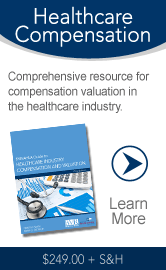 |
 |
Issue #22-1 | March 20, 2014

Value-based priorities for the healthcare industry Healthcare executives have a trifecta of value-based priorities that they say they must focus on for the rest of 2014. The 10th annual Healthcare Trends and Forecasts in 2014 survey from the Healthcare Intelligence Network reveals that: (1) population health management (cited by 56% of respondents); (2) care coordination (51%); and (3) integrated care delivery (42%) are the front-burner initiatives for healthcare organizations. ACA impact: Survey respondents were also asked how they expect the Affordable Care Act (ACA) to impact their businesses for the rest of 2014. Some representative responses: “Our customer base will expand greatly with implementation of physician ACO [accountable care organizations] and bundled payment programs,” says a home health/hospice provider. “Less reimbursement. We will have to be smarter and more efficient in how we deliver care and reduce costs,” says a hospital/health system. One response underscores the uncertainty that surrounds health reform from the physician perspective. “Not sure. Lack of control on hospital service expansion will create even less competition in the marketplace, making physician led delivery networks even more difficult to develop and turn into successful enterprises,” says an independent practice association (IPA). A total of 136 healthcare companies responded to the survey, which asked 20 questions about front-burner healthcare concerns, the continuing impact of ACA implementation, and the best and worst business decisions (including lessons learned). For more information and to order a copy of Healthcare Trends and Forecasts in 2014, click here. New bills seek to fix the ‘two-midnight ’ rule A new bill in the Senate establishes new guidelines for the controversial "two-midnight" rule on Medicare inpatient admissions. As it stands, the rule is expected to reduce the profitability of healthcare providers, according to Moody’s Investors Service. Revenue hit: CMS' two-midnight rule will reduce revenue for most hospitals when it takes effect this October, according to a report from Moody's. It expects the rule to weaken hospital operating profitability in calendar year 2014 and beyond as it lowers Medicare reimbursement, although the regulation's impact will vary across the nonprofit hospital sector. According to the two-midnight rule, inpatient admissions spanning at least two midnights qualify for Medicare Part A payments. Inpatient stays lasting fewer than two midnights must be treated and billed as outpatient services. CMS introduced the policy to better monitor Medicare reimbursement for short inpatient stays and ensure inpatient admissions are medically necessary. Healthcare providers have fiercely opposed the rule, saying it is unclear and undermines the medical judgment of physicians. The Senate bill has won the support of the American Hospital Association, America's Essential Hospitals (AEH), the Association of American Medical Colleges, and various state hospital associations. Among other things, it calls for the development of a payment methodology for short inpatient stays based on the newly structured criteria. A similar bill has been introduced in the House, but the Senate bill goes further by mandating the inclusion of input from various stakeholders. M&As seen as value salvation Merger and acquisitions in healthcare are gaining pace in the U.S. as the industry tries to recover from the reduced profitability and operating margins caused by the economic downturn and tougher regulatory environment, reveals a new analysis from Frost & Sullivan. The healthcare industry sees M&A as a key means to reverse the trend of declining profits as they boost economies of scale and provide access to more capital, which is required to comply with the various regulatory standards. "The full-fledged implementation of the Affordable Care Act—that aims to improve access to healthcare among U.S. citizens—is expected to drive consolidation in the healthcare provider industry over the next 12 months," says Dr. E. Saneesh, a Frost & Sullivan analyst. The new report, Analysis of Mergers and Acquisitions Trends in the United States Healthcare Provider Industry, reveals the volume of M&A deals has increased from 199 in 2007 to 260 in 2013. In particular, the post-acute care, surgical and emergency center segments are expected to drive M&A activity in the U.S. healthcare provider industry. Other key trends:
Four primary drivers of value of dialysis clinics While dialysis clinics can be a lucrative business, they represent a complex challenge in terms of determining their value. These entities are highly regulated, dependent on a variety of patient reimbursement models, and at the mercy of their patient mix, geographic location, and relationship with local nephrology practices. James Lloyd (Pershing Yoakley & Associates P.C), a healthcare valuation expert, gave his insights into what he sees as the key value considerations for dialysis clinics. Community demographics: Speaking during a webinar, Lloyd pointed out how difficult it is to increase growth once the dialysis center is up and running and has achieved a level of maturity. “It is very difficult to grow volume more than the amount of growth in the actual community and the average age of the population in the community,” he says. Relationship with area nephrologists: Dialysis centers are very dependent upon the relationships with local nephrologists. “That is where the referrals—and patient oversight—comes from,” he says. “That is very critical.” Important considerations are the number of nephrologists in the area and whether there is more than one group or multiple groups. Also important is whether they are currently aligned with another provider of dialysis centers. Competition: Just as in any business, the amount of competition in the area is important. “There are multiple areas across the country where there are more dialysis centers than can really be justified,” he points out. “You will likely see that some centers will be very highly utilized because that is where the nephrologists are referring their patients. The other centers will be very underutilized.” Reimbursement trends: The trends in reimbursement rates, particularly from Medicare, are very critical, he points out. “As we are all aware, there is significant pressure to reduce healthcare spending,” he says. “There is tremendous pressure to reduce Medicare costs and a significant portion of dialysis services are paid for by Medicare. This is something that you need to be very attuned to with what the MedPac and other reports are saying with regards to the future of reimbursement rates in connection with these services.” The trouble is, there is a great deal of uncertainty about this. As Lloyd puts it: “None of us have a crystal ball to know exactly where this is going.” For an archive of the webinar, Valuing Dialysis Clinics, click here. Hospitals underestimate some EHR costs Electronic health records (EHR) systems are costing hospitals more than they thought, according to a new study in the Journal of the American Medical Informatics Association. Conducted in England, the study identified four major cost categories associated with implementing an EHR: infrastructure (hardware and software), personnel (project managers and training teams); facilities (physical space, fixtures), and other (training materials). According to the study's authors, many factors affect these costs, such as different software applications and approaches to training, for example. Misjudged costs: In addition, researchers discovered that hospitals did not fully account for costs associated with certain factors, such as the need to add staff due to lost productivity, and the need to test the system due to inadequate vendor testing. In addition, some hospitals incurred significant costs training clinicians and administrative staff to use the new system. "With cost considered one of the most significant barriers, it is important for hospitals and governments to be clear from the outset of the major cost categories involved and the factors that may impact on these costs," stated the authors in the study's conclusion. |
|
||||||
1000 SW Broadway, Suite 1200, Portland, OR 97205
(503) 291-7963 | editor@bvhealthcarenews.com
www.BVResources.com/healthcare

